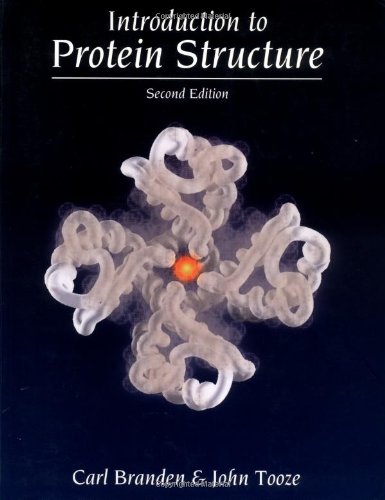Introduction to Protein Structure ebook download
Par velez nancy le lundi, août 22 2016, 12:21 - Lien permanent
Introduction to Protein Structure by Carl Branden, John Tooze


Introduction to Protein Structure Carl Branden, John Tooze ebook
Page: 415
Publisher: Taylor & Francis
ISBN: 0815323050, 9780815323051
Format: djvu
Natasha Khuri will introduce structural modeling and dynamics of proteins and their application in the challenging and promising fields of computational drug screening. The proposed model for the search for conservative areas in a protein family was introduced on the basis of geometric characteristics of the polypeptide backbone conformation [2] and information theory. Introduction to Protein Structure Introduction to Protein Composition supplies an account of the ideas of protein framework, with examples of essential. Reconstruction of additive trees. A single protein crystal structure contains information about dynamic properties of the protein as well as providing a static view of one three-dimensional conformation. Lecture 4 – Introduction to Protein Structure (1)IntroductionProteins are the functional forms of polypeptides. [3] - A perspective on enzyme catalysis by Stephen Bankovic and Sharon Hammes-Schiffer [4] - RCSB protein database. Computer Simulation of Liquids .D. This additional information is to be found in the distribution 1. [2] - Introduction to Protein Structure by Branden and Tooze. Molecular Modelling: Principles and Applications, introduction to protein structure, M.P. According to the neutral theory of evolution, the functionality of protein with disadvantageous amino acid substitution can be restored by another amino acid substitution which compensates the first one to sustain the fitness [1]. And applications of Microrrays analysis and gene expression while Dr. Furthermore, replacing Trp-248 with a smaller aromatic amino acid (Tyr/Phe) impaired the β-arrestin recruitment, yet with maintained G protein activity (biased signaling); also, here aplaviroc switched to a full agonist. Once these crystals are large enough will be used for solving the structure. Proteins are prompted to form crystals under the appropriate conditions. Approximating additive metrics. Proteins are the first of the important nutrients the body because it is the basic structure of cells, which amounts to 80 percent of the body. The Figure shows proteins A and B which have 3 similar structure fragments. The equilibrium state of CCR5 is manipulated here toward either activation or inactivation by introduction of single amino acid substitutions in the transmembrane domains (TMs) 6 and 7.